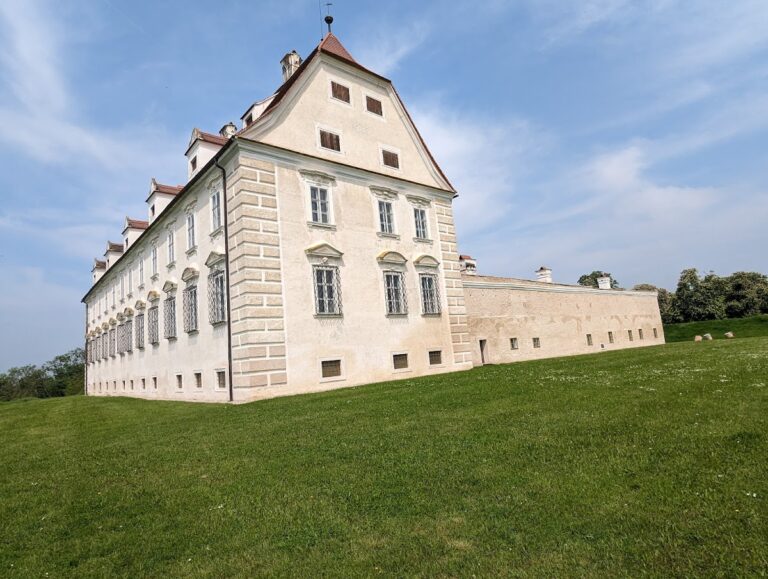Schloss Guntersdorf: A Historic Water Castle in Austria
Visitor Information
Google Rating: 4.9
Popularity: Very Low
Official Website: www.schlossguntersdorf.com
Country: Austria
Civilization: Unclassified
Site type: Military
Remains: Castle
History
Schloss Guntersdorf is situated in the municipality of Guntersdorf in Austria. The origins of this site trace back to its early association with the Melk Abbey, a significant religious institution in the region, indicating ecclesiastical ownership during the medieval period.
By the late 13th century, the estate had passed into the hands of the Ruckendorffer family. In 1295, a portion of the property was pledged by Ulrich von Ruckendorff to Eberhard IV von Walsee, who formally acquired the lordship in 1317. The Walseer family maintained control of Schloss Guntersdorf for more than a century, until 1476, when the property came under the ownership of the Rogendorfer family.
From 1538 onward, the estate functioned as free property belonging to the Rogendorfers. This period was relatively stable until 1546, when Christoph von Rogendorf sold the castle to Johann Freiherr von Weißpriach. Ownership then transferred through familial ties when Johann’s daughter married Christoph Freiherr von Teufel, bringing the property into the hands of the Protestant Teuffel family.
The political and religious pressures of the 17th century forced the Teuffel family to relinquish the estate. In 1684, the property was sold to Johann Karl von Serenyi. His son, Karl Anton Graf Serenyi, held the lordship until December 10, 1717, when he sold it for 236,000 Gulden to Johann Rudolf Freiherr von Ludwigsdorf. The Ludwigstorff family has retained ownership since that time.
During the latter half of the 16th century, the original medieval structure underwent substantial expansion, transforming into a larger complex encircled by a water moat. The castle endured significant damage and plundering during World War II, but it remained a central estate with approximately 280 hectares of farmland and 20 hectares of woodland. In the late 20th century, Carl Hugo Ludwigstorff owned the property, and in 1990, management was taken over by his grandson, Dominik Ludwigstorff.
Remains
Schloss Guntersdorf developed into a classic example of a Wasserschloss, or water castle, characterized by a system of defensive water-filled moats surrounding the main structure. This design emerged prominently during the second half of the 16th century when the original medieval buildings were expanded into a more extensive fortified complex.
The layout includes an arrangement of buildings encased by a continuous water moat, which served both as a protective barrier and a defining architectural feature. The construction reflects a blend of late medieval styles augmented with Renaissance-era enhancements that accommodated both defense and residential uses.
The estate encompasses an extensive area, incorporating about 280 hectares of arable land and an additional 20 hectares of woodland. This generous landholding formed the economic basis of the estate, sustaining the castle’s inhabitants and supporting its maintenance.
Today, the castle structure remains well preserved, with the water defenses clearly visible, demonstrating their lasting significance. The site benefits from status as a protected historic monument, which has contributed to its conservation. While specific decorative elements or inscriptions have not been recorded in the available sources, the preservation of the moat and overall complex outlines offers valuable insight into the estate’s historical layout and defensive strategies.







